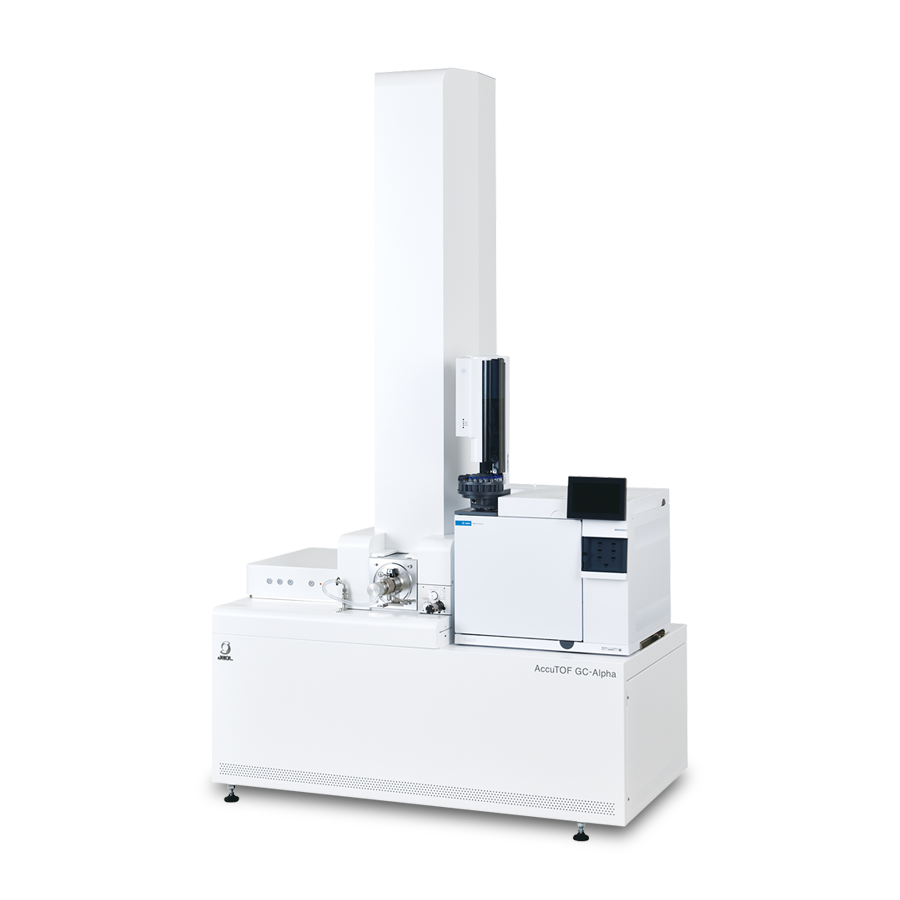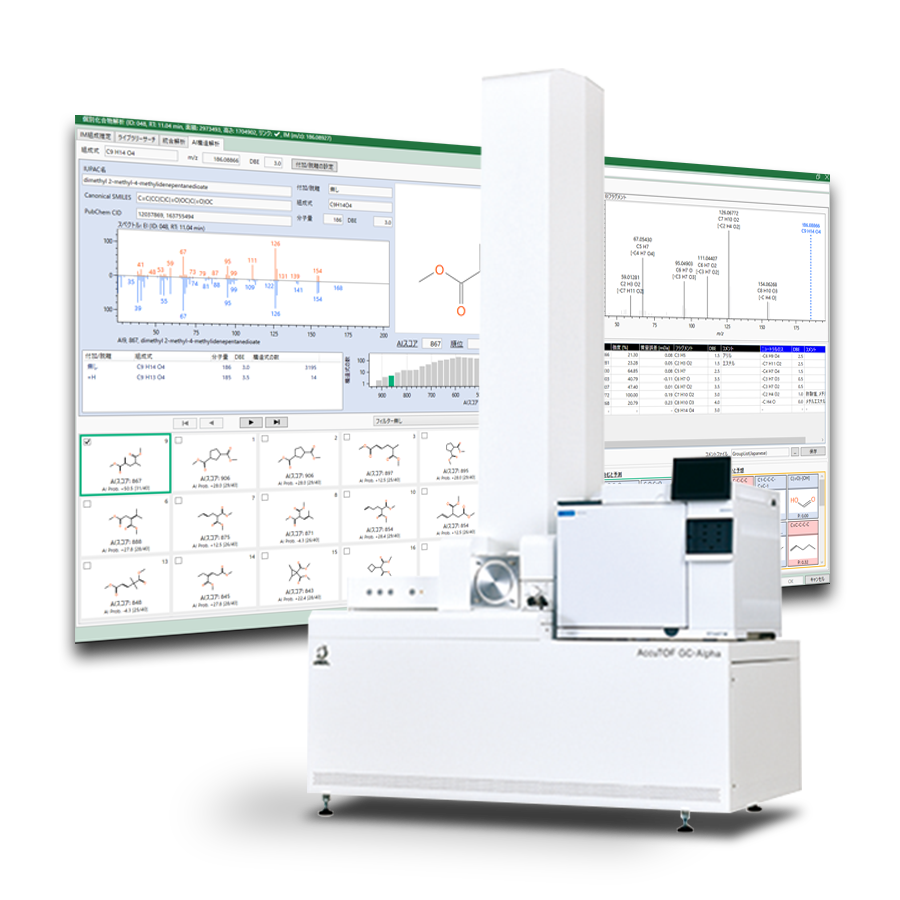Target analysis of msFineAnalysis AI Ver.2
② Polymer type estimation
MSTips No. 479
Introduction
The target analysis function of the unknown compounds structure analysis software "msFineAnalysis AI" Ver.2 detects peaks from extracted ion chromatograms (EICs) based on information such as the molecular formulas and mass spectra of pre-listed components. In the previous MSTips478, we introduced an application using the software preset target list "Polymer additives".
These target lists can be edited by the user, and new ones can be created for different purposes. In this MSTips we will introduce an application of polymer type estimation using the major pyrolysis products of polymers 1). Figure 1 shows a target list for this application. No. 001 1,20-heneicosadiene of polyethylene (PE) and No. 004 2-Phenethyl-4-phenylpent-4-enenitrile of acrylonitrile butadiene styrene (ABS) are not registered in the NIST library, but by registering the measurement results in advance in the NIST user library, it become possible to judge using mass spectrum similarity. Furthermore, by specifying a high-intensity fragment ion instead of a molecular ion as the extracted ion, it possible more sensitive peak detection.
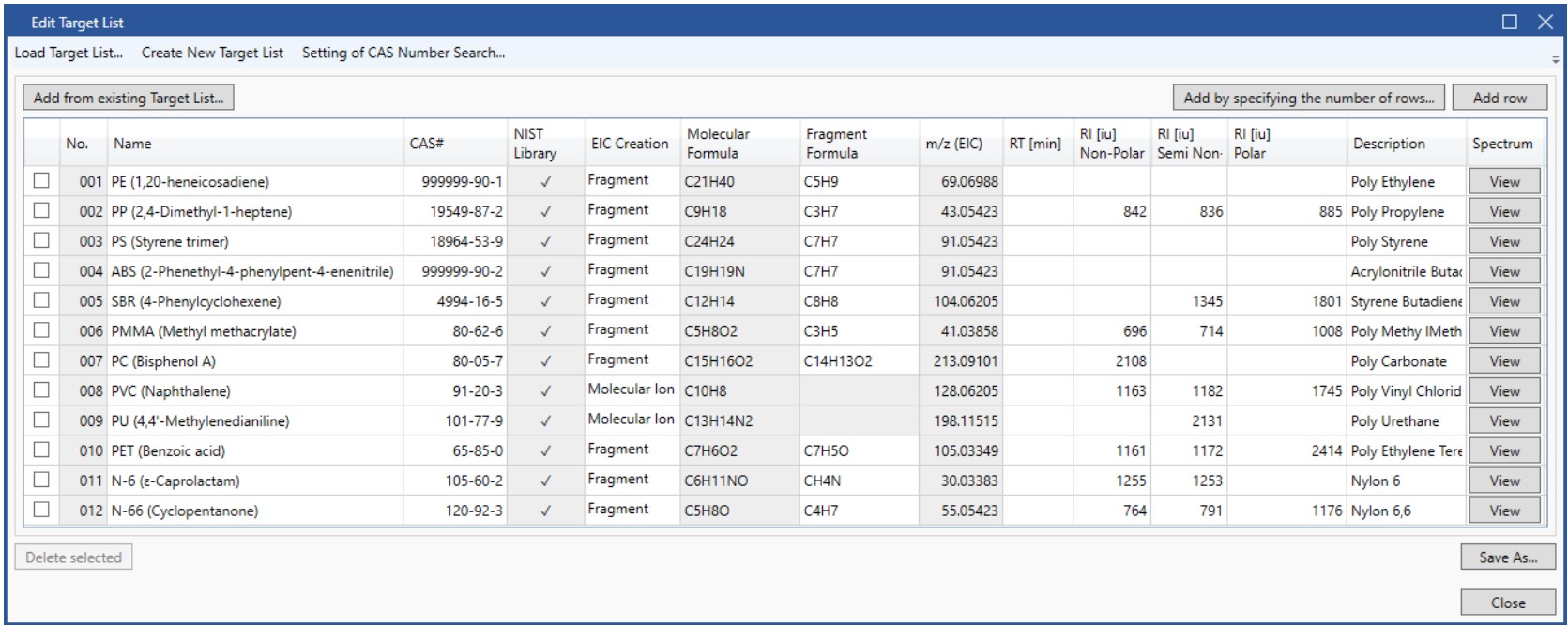
Figure 1 Target list for polymer type estimation
Experiment
As the sample, commercially available polypropylene (PP), recycled PP, polyethylene terephthalate (PET), and recycled PET products were used. 0.2 mg of each was weighed and measured using Pyrolysis-GC-MS. EI and FI (field ionization) methods were used for ionization. The obtained data was analyzed using msFineAnalysis AI. Table 1 shows details of the measurement conditions.
Table 1 Measurement conditions

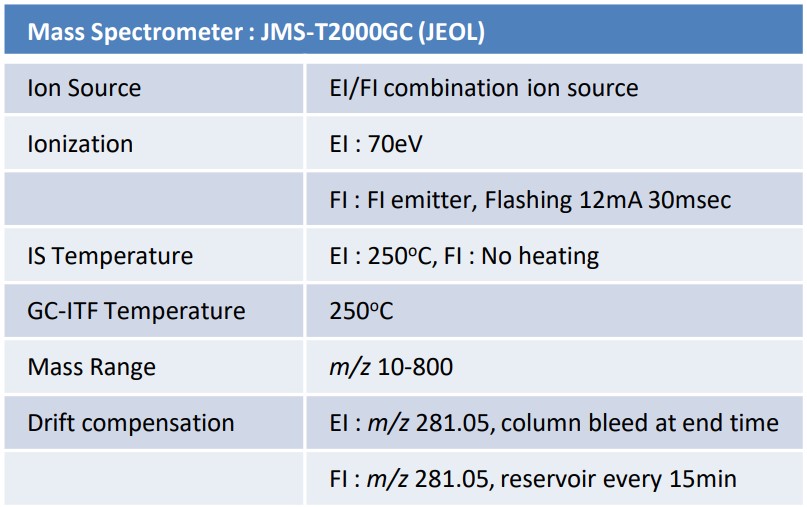
Results
Figure 2 shows the TIC chromatograms of the EI measurement results. 2,4-Dimethyl-1-heptene, a major pyrolysis product of PP, was detected in PP and recycled PP products. CO2, vinyl benzoate, and benzoic acid, major pyrolysis products of PET, were detected in PET and recycled PET products. In addition to these, several other peaks were detected in recycled PET product.
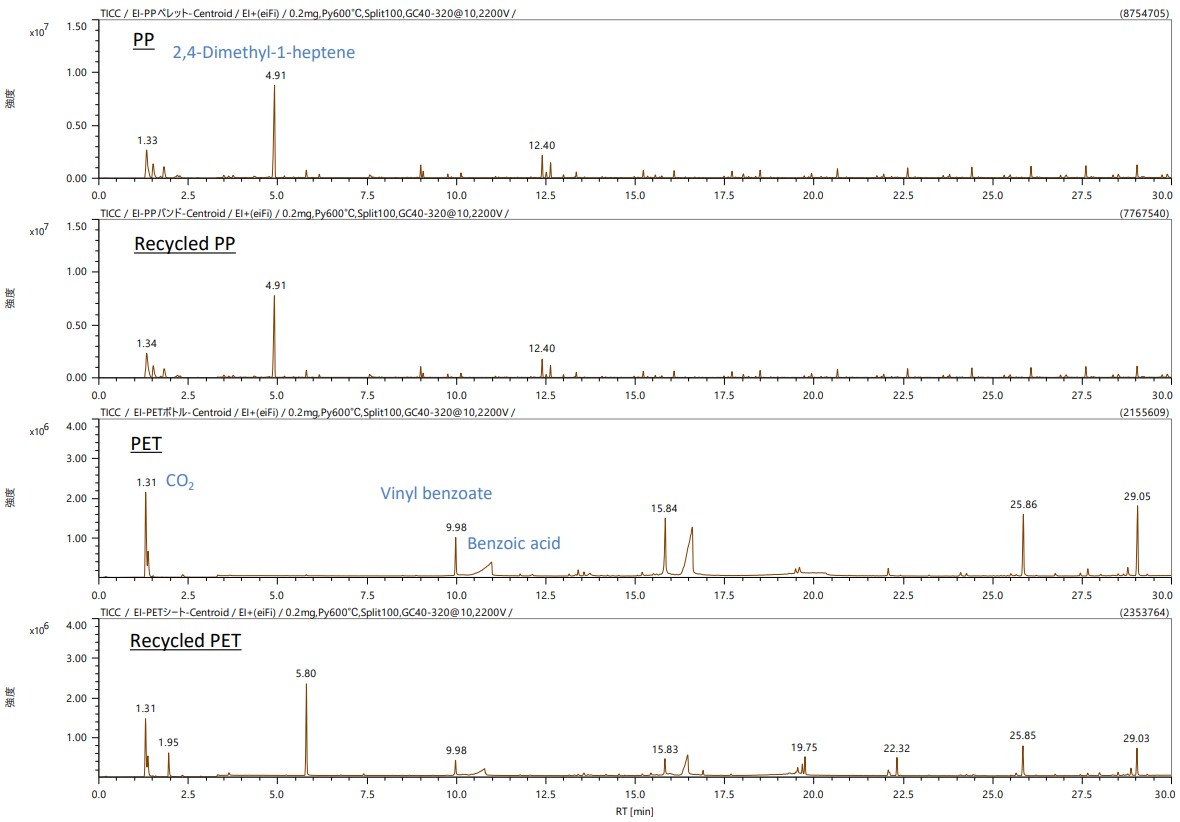
Figure 2 TIC chromatograms
Target analysis results ① – PP product
Figure 3 shows the results window of the target analysis of msFineAnalysis AI.

Figure 3 Result window of target analysis
Table 2 shows the target list of the analysis results. The background color reflects the analysis results. Yellow indicates compounds with peaks detected on the EIC, and blue indicates compounds that also passed qualitative analysis such as mass spectrum similarity (=compound identified to be targets). In this result, only 2,4-dimethyl-1-heptene, a major pyrolysis product of PP, was identified.
Table 2 Target list

Target analysis results ② – recycled PP product
Table 3 shows the target list of the analysis results. As with PP product, only 2,4-dimethyl-1-heptene was identified.
Table 3 Target list

Target analysis results ③ – PET product
Table 4 shows the target list of the analysis results. Only benzylic acid, a major pyrolysis product of PET, was identified.
Table 4 Target list

Target analysis results ④ – recycled PET product
Table 5 shows the target list of the analysis results. As with PET product, benzoic acid was identified. In addition, styrene trimer of polystyrene (PS) and methyl methacrylate of polymethyl methacrylate (PMMA) were identified, suggesting that PS and PMMA may be included.
Table 5 Target list

Conclusion
Polymer type estimation was performed using target analysis of msFineAnalysis AI Ver.2. As a result, it was confirmed that recycled PET products may contain polymers such as PPS and PMMA. Non-targeted analysis is necessary to obtain more detailed information, but targeted analysis can quickly obtain results and is effective as a screening method.
Reference
1) Shin Tsuge, Hajime Ohtani, Chuichi Watanabe (2011), Pyrolysis - GC/MS Data Book of Synthetic Polymers, Elsevier
Solutions by field
Related products
Are you a medical professional or personnel engaged in medical care?
No
Please be reminded that these pages are not intended to provide the general public with information about the products.

